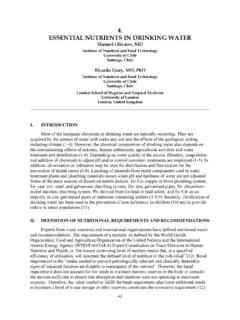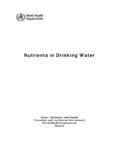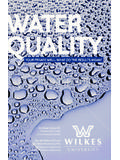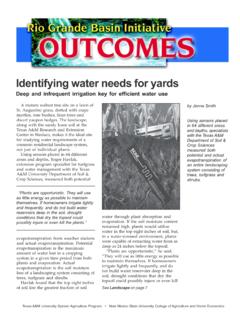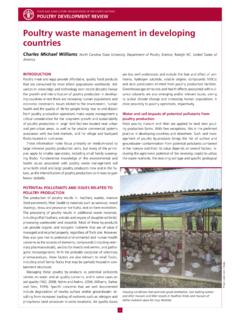Transcription of A systematic review of analytical observational …
1 A systematic review of analytical observational studiesinvestigating the association between cardiovasculardisease and drinking water hardnessLouise A. Catling, Ibrahim Abubakar, Iain R. Lake, Louise Swiftand Paul R. HunterABSTRACTL ouise A. CatlingIbrahim Abubakar(corresponding author)Louise SwiftPaul R. HunterSchool of Medicine, Health Policy and Practice,University of East Anglia, Norwich,Norfolk NR4 7TJ,UKTel.: +44 (0) 1603 591238 Fax: +44 (0) 1603 R. LakeSchool of Environmental Sciences,University of East Anglia,Norwich,Norfolk NR4 7TJ,UKThe aim of this study is to systematically review and critically assess analytical observationalepidemiology studies investigating the association between levels of drinking water hardness andcardiovascular disease.
2 We searched electronic databases and used standardised forms to extractdata and assess study quality. Of 2,906 papers identified, 14 met the inclusion criteria (nine casecontrol and five cohort studies). Of the nine case control studies, seven examined both drinkingwater magnesium and calcium and risk of death from cardiovascular disease. A pooled odds ratioshowed a statistically significant inverse association between magnesium and cardiovascularmortality (OR (95%CI , ), p, ). Only two studies reported a statistically significanteffect for calcium. Substantial heterogeneity between studies made calculation of a summaryestimate for drinking water calcium inappropriate.
3 Of three cohort studies reviewed, two were ofgood quality. A weak suggestion that soft water was harmful in females and possibly associated witha slightly greater risk of sudden death was reported, but there was no association between waterhardness and mortality from stroke or cardiovascular disease. This study found significant evidenceof an inverse association between magnesium levels in drinking water and cardiovascular mortalityfollowing a meta-analysis of case control studies. Evidence for calcium remains words|calcium, cardiovascular disease, drinking water , magnesium, systematic review , waterhardnessINTRODUCTIONIt is now almost 50 years since the publication of the firstpapers suggesting an inverse association between drinkingwater hardness and cardiovascular mortality in Japan(Kobayashi 1957) and the US (Schroeder 1960).
4 Thereafter,a considerable number of studies have been publishedinvestigating this general association in many differentnations. Furthermore, recent studies have begun to examinemore diverse health outcomes including cancer (Yang &Hung 1998;Yanget ,2000,2002). The hardnessof drinking water is directly determined by the concen-tration of dissolved minerals, predominantly calcium andmagnesium, mainly in combination with bicarbonate,sulphate and chloride. The possible role of drinking waterhardness, calcium or magnesium in the pathogenesis ofcardiovascular disease remains new dimension in the continued interest in what hasbecome known as the water story is presented by theincreased use of alternative sources for the provision ofdrinking water in regions where resources are becomingincreasingly strained due to population growth.
5 Two suchimportant practices are water desalination and wastewaterreuse. Both technologies generate demineralised waterwhich must then be reblended to increase the concen-trations of nutrients including calcium and : Publishing 2008 Journal of water and Health| |2008 The identification of any population health effect that maybe associated with the chemical quality of drinking watermay therefore be of paramount importance before suchdemineralised then reblended water may be utilised on alarge scale (WHO 1979).A number of reviews of predominantly ecological studieshave been undertaken ( & Neutra 1997;Sauvant &Pepin 2002;Monarcaet ); however, these previouspublications used a narrative style.
6 We conducted a compre-hensive and systematic review of studies examining theapparent effects of soft water on cardiovascular disease andcancer commissioned by the UK drinking water Inspecto-rate (Catlinget ). Our systematic review incorporateda defined qualitative assessment of all studies and concludedthat further investigation was date, the body of literature on this topic is domi-nated by studies of an ecological design (75%, n 60 Catlinget ), which generally favour an inverseassociation between drinking water hardness and cardio-vascular mortality. Whilst such studies are beneficial forhypothesis generation and preliminary investigation,the ecological study design has a number of inherentlimitations and is unable to address causality.
7 This studyconcentrates on analytical epidemiological studies exami-ning drinking water hardness, calcium or magnesium andcardiovascular disease, and reports a focused assessmentof methodologically superior studies (case control andcohort) including meta-analysis where strategyA standardised search strategy was devised includingthe following major search terms as both medical subjectheadings (MeSH) and text words where appropriate: water ,calcium or calcium compounds, magnesium or magnesiumcompounds, hardness or hardness tests, soft, softened, watersupply, water softening, hydrotimetry, cardiovascular disease,coronary disease, coronary arteriosclerosis, heart disease,cerebrovascular disease, hypertension, blood databases includingMEDLINE(1985 2006),EMBASE(1985 2006),BIOSIS(1985 2006), Web of Science(1985 2006),CINAHL(1985 2006), Toxline,SIGLE,theUK National Research Database and the Cochrane databasewere searched.
8 This search strategy was designed to bebroad and inclusive to increase extractionThe titles and abstracts of the papers were screened bytwo reviewers (LC and IA). Papers were retained if theypresented primary data of human studies, were relateddirectly to the research question, involved a comparisonof populations or individuals at different levels ofexposure using a case control or cohort design, andwere in the English language. Disagreements were settledby forms were designed to abstract data on resultsand study quality for case control and cohort studies. Paperswere independently reviewed by two individuals to extractdata including patient or population characteristics, locationof the study, outcome measures examined (types of illness/health effects considered) and exposure characteristics (levelsof drinking water hardness or specific constituents).
9 The ageand gender adjusted effect estimates (odds ratios and relativerisk where appropriate) and corresponding measures ofprecision were extracted for the highest level of exposurecompared with the referent methodological quality of studies was assessedusing components of the Newcastle-Ottawa criteria (Wellset ). The information extracted for the different studytypes variously examined exposure characterisation (use ofa proxy or average measure of exposure, role of bias, timingof measurement), population characteristics (selection ofcases and controls, adequacy of response rate/follow up,adequacy of length of follow up) and statistical analysis(confounding, collinearity, adequacy of reporting, methodof analysis).
10 Statistical analysisWhere appropriate data were available, studies were thensummarised according to type of exposure (total waterhardness, magnesium and/or calcium) and meta-analysiswas used to pool odds ratios. Heterogeneity was assessedusing the Cochran s Q test statistic and quantified using the434L. A. Catlinget al.| drinking water hardness and cardiovascular mortalityJournal of water and Health| |2008I2statistic (Higginset ). Where heterogeneity wasnot significant, fixed effects models were used, otherwiserandom-effects models were generated. The possibility ofpublication bias was examined by funnel plot and Egger stest.

